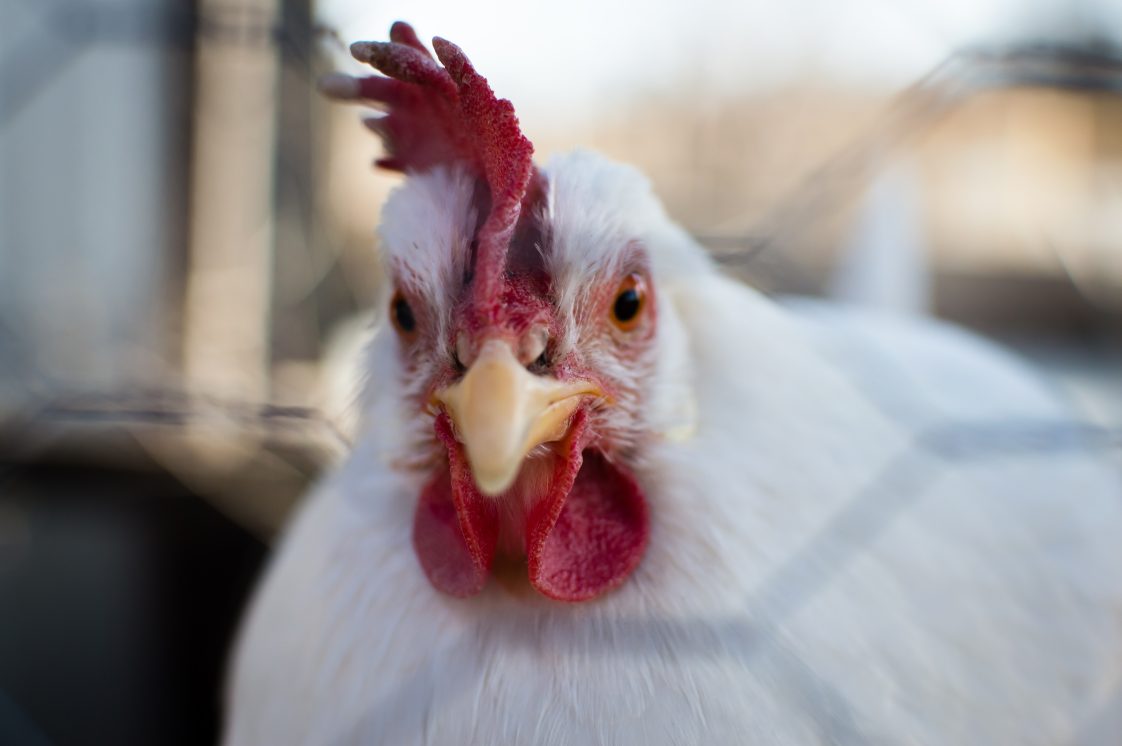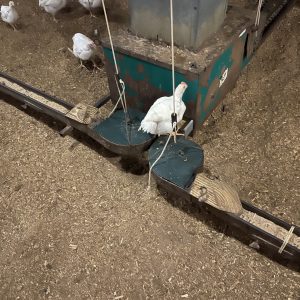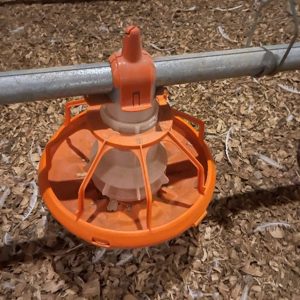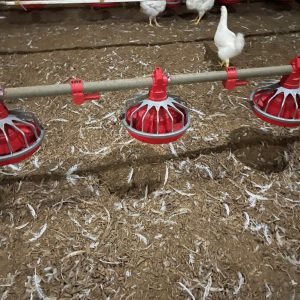Commercial Poultry

This publication is the first in a three-part series on improving the body uniformity of broiler breeder pullets. The objective is to provide the importance of body weight uniformity in the rearing of pullets and cockerels, review the calculations to compute body weight uniformity, and discuss management practices to enhance body weight uniformity associated with feeder space per bird and feed distribution on body weight uniformity.
Life of flock egg production and fertility starts with managing pullets and cockerels to maintain target body weights throughout rearing and the lay cycle. Body weight uniformity or variation is an important metric to assess rearing performance. Underweight birds typically respond slower to light stimulation, reducing the sexual synchronization of the flock. If males and females are not synchronized, reproduction performance can be delayed early in the lay cycle. Hens with lower body weight are known to produce smaller eggs and may experience lower hatchability due to increased embryonic mortality early in the laying cycle. In addition, a uniform breeder flock is easier to manage with feed allocation, body weight, and fleshing (males) to optimize reproductive performance during the life of the flock.
Pullets and cockerels during rearing are fed a control feeding strategy to control body weight gain, which limits the amount of feed provided. Control feeding requires adequate feeder space so all birds can consume feed simultaneously. Body weight uniformity is determined by the coefficient of variation (C.V.) and flock evenness. The target for body weight uniformity is to obtain a C.V. of around 12 percent; however, in poorly performing flocks, body weight uniformity C.V. may approach 17 to 18 percent during the rearing phase. Poor uniformity is typically caused by feed intake or utilization issues that can be associated with bird health or adequate access to feed in a timely manner. In addition to uniformity, feeder access and distribution can also create behavior issues in pullets, such as feather picking and piling. Feather picking can cause fertility problems late in lay, while cannibalism and piling (occurring between 5 to 15 weeks of age [WOA]) can result in mortality during rearing.
Calculations of Uniformity
When weighing a sample of the flock, body weight variation is calculated as C.V. percentage (standard deviation divided by the average body weight × 100). Standard deviation is a determination of the amount of variance among a data set. It measures the variability of each measurement or individual bird weight from the overall mean or average. A small standard deviation indicates that the data points are close to the mean or average, whereas a large standard deviation indicates a large spread in the data set relative to the mean or average. Standard deviation is calculated by squaring the distance from each data point or body weight from the mean or average. Each squared value is summed, and the square root of the summed squared values divided by total number of data points minus one is computed to estimate the variance of the data set or sample weighing. Electronic scales compute the standard deviation and C.V. percentage, and understanding how these numbers are computed is important. Evenness is determined by the percentage of sampled birds that are within 10 or 15 percent of the average body weight, with 10 percent of the average body weight being preferred.
Generally, 2 percent of the population, or 50 birds, should be weighed weekly. Obtain samples from three or four locations throughout the house. A set of platform scales can be installed in pullet and cockerel houses to obtain weights in the range of 600 to 900 birds daily.

Figure 1. Platform scales equipped in a commercial pullet house.
The platform scales have gained popularity due to fewer labor requirements and the ability to obtain daily weights, which allows producers to respond quickly when making feed allocation changes and provides consistent data. Poultry service technicians often hand weigh a sample of birds weekly (3 to 21 weeks of age [WOA]) to ensure that the platform scales are working properly. If the hand weights and the platform scale weights are similar, the poultry company typically relies on the platform scale weights to obtain the associated C.V.’s and evenness due to the larger number of birds used to generate these data. Check scales regularly with test weights to ensure accurate measurements. If there is an inconsistency between the test weights and scale readings, calibrate the scales (figure 1).
The shank length of birds can also be monitored to provide an indicator of flock uniformity. It is measured with a ruler from the hock joint to the rear toe. Primary breeding companies may have rulers specifically made for measuring shank lengths of cockerels. The shank length has a high correlation with body weight and keel length. Approximately 50 percent of the target shank length at 25 WOA is obtained by 4 WOA, which emphasizes brooding to optimize body weight and frame development uniformity.
Feeder Space
Controlled feeding is practiced by allowing birds to reach sexual maturity at the correct body weight and condition. Feeder space and distribution are of utmost importance with controlled feeding to ensure that all the birds are consuming feed simultaneously to obtain adequate nutrient intake. Feeder space may be adequate during the initial rearing phase, but as birds approach 13 WOA or older, feeder space may become marginal, resulting in poor body weight uniformity late in rearing. In the field, pullet stocking density ranges from 1.3 to 1.6 ft2/ bird and approximately 2.5 to 3.0 ft2/bird for cockerels. For pullets, space per feeder should range from 2, 4, and 6 inches per bird for track feeders and 2, 3, and 4 inches per bird with pan feeders, and for cockerels from 2, 4, and 6 inches per bird for track feeders and 2, 3.5, and 4 inches per bird with pan feeders from placement until 5 WOA, 5 to 10 WOA, and 10 to 15 WOA. The number of chain or pan feeder lines used should be staged appropriately during rearing based on feeder space requirements per bird.
Feeder space allocation should result in 12 pullets or 8 to 9 cockerels per pan. In the field, it is not uncommon to observe that additional chicks are placed during rearing to compensate for increased mortality. This increased chick placement can lead to inadequate feeder space per bird, potentially hindering the achievement of uniform body weight during rearing. For example, 15,000 chicks placed in a 40-foot × 500-foot pullet house equipped with four pan feeder lines, each line having 208 pans, could create management challenges in maintaining adequate feeder space for pullets. In this scenario, stocking density would be approximately 1.3 ft2/bird, with feeder space being 18 pullets per feeder. Reducing feeder space per bird could prevent all birds in the house from having enough space to consume feed simultaneously, leading to variations in body weight and potentially behavioral issues, such as piling and feather picking. To improve feeder space in an existing house, consider adding an additional line of pan feeders or a loop of track feeders. However, be careful not to provide too much feeder space, as this can also cause issues with pullets exceeding their target body weight.
Feed Line Distribution
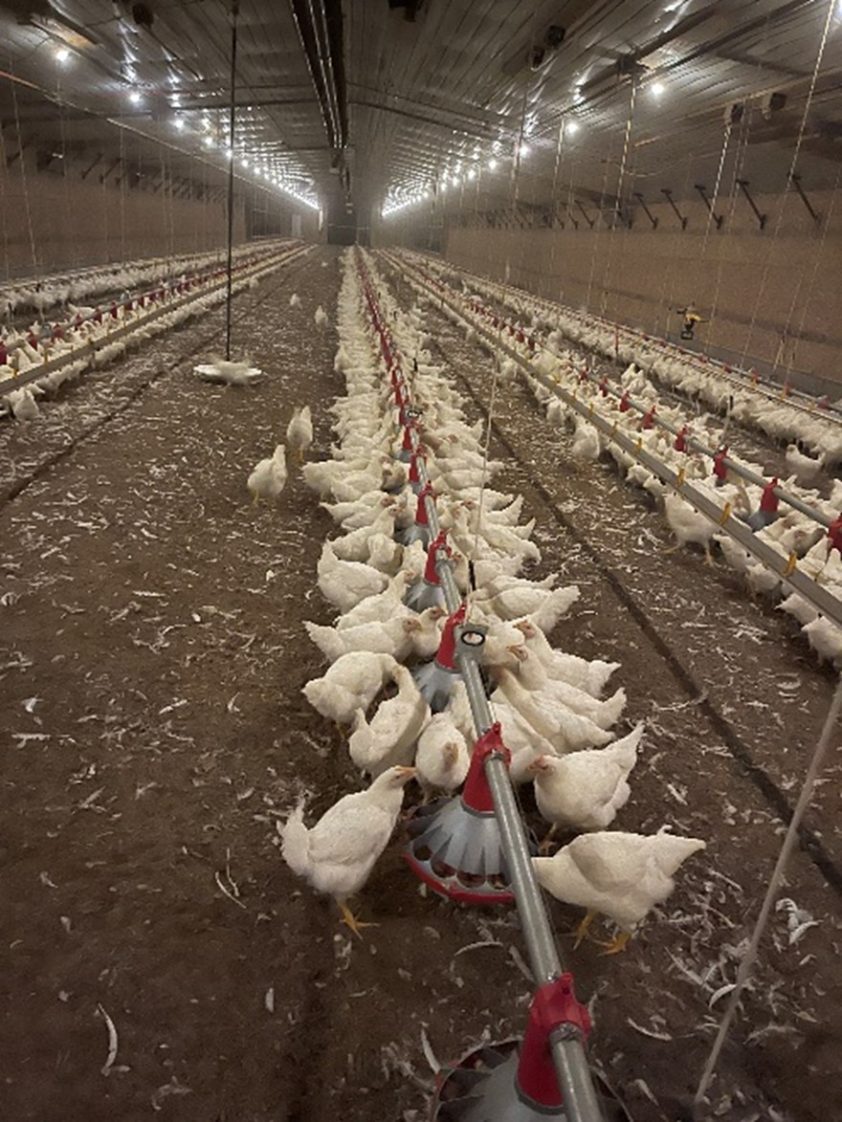
Figure 2. Pullets at 17 weeks of age on a pan feeding system with a
feeder space of 12.5 birds per pan.
In addition to providing adequate feeder space, it is essential to ensure that feed is distributed throughout the house within 3 minutes to ensure that all birds have access to feed, which is paramount in obtaining a uniform body weight of the flock (figure 2). Providing an adequate volume of feed in a timely manner is crucial, along with ensuring that the feed system is working properly. Another important aspect of a feeding system is ensuring that the scales at the feed bins are routinely calibrated to ensure that the feeding system is delivering the correct amount of feed. Incorrect feed weights can prevent birds from achieving their target body weight by being either under- or overweight. Pullets and cockerels are reared on 8 hours of light and 16 hours of darkness to prepare them to respond to increasing hours of light in the laying cycle, which helps to optimize reproductive performance. It is a good practice to provide feed a few minutes before the lights come on to ensure that all the feed is evenly distributed throughout the house when the lights come on. Feed should be distributed throughout the house in less than 3 minutes.
In the past, a chain feeding system has worked well equipped in small houses (36 feet × 300 feet) with a chain speed of 60 feet per minute. However, larger houses (40 feet × 500 feet) require a faster chain speed (90 feet per minute) to distribute the feed uniformly throughout the house in a short time. If feed is not being distributed throughout the house quickly with a chain feeding system, adding hoppers, lines, and loops can improve feed distribution. The additional hopper should be able to fill half of the track loop. When more than one track is required as the birds age, tracks should operate in the opposite direction. When the feed level in the trough is inadequate, the feed level slides should be adjusted with a track feeding system. One of the disadvantages of a chain system is the risk of mortality due to chicks getting into the chain system mechanism. Cover openings of feed corners to avoid chicks entering these uncovered places in the chain feeding system (figure 3. Feed corners of track feed line covered to prevent mortality).
A pan-feeding system is used as a straight line or with a loop system. One of the benefits of the pan-feeding system is that growers experience lower mortality rates, as chicks are less likely to get caught in the chain-feeding system. However, if the feeder height is not set correctly, chicks can get into the pan feeder, leading to increased mortality. Equipment failure can pose a significant challenge to feed distribution in a pan-feeding system. Pan feeders losing charge (adequate amount of feed in the pan) can lead to some birds having limited access to feed, negatively affecting the uniformity of the flock (figure 4). Feed line motor tripping can affect feed lines losing charge. It would not be uncommon for a pullet or cockerel house to have 20 switches or more to operate a pan-feeding system. If a switch fails, it can cause issues with feed distribution. It is essential to ensure that the equipment is working properly to supply feed throughout the house. At feeding, growers should check the house to ensure that the feed line is charged before going to the next house to start the feed system. Another cause for feed distribution could be related to the unevenness of floors under the pans. Floors having uneven litter depth under feeder pans can result in birds not having access to feeders by creating variability of pan feeder height (figure 5).
- Figure 3. Feed corners of track feed line covered to prevent mortality.
- Figure 4. Feeder line is not charged due to an equipment failure.
- Figure 5. Uneven litter depth under the pan creating variation of pan heights.
Feeder Height
Feeder pan height should be adjusted according to the age of the flock. A proper feeder height allows birds adequate access to the feeders, avoids litter accumulation in the pans, and minimizes feed spillage. Generally, the lip of the pan feeder should be approximately ⅔ to ¾ the top of the wing of the bird. In addition to feeder height, pan feeders should be set appropriately for the volume of feed needed for the birds.
Conclusion
Body weight uniformity during rearing significantly influences reproductive performance in the subsequent lay cycle. A well-managed feeding system plays a central role in optimizing body weight uniformity. Feeding systems should deliver a uniform volume of feed throughout the house in a short time (less than 3 minutes) to ensure that all birds have access to feed. This will help minimize variations in body weight uniformity and improve overall flock performance. Optimum feeder space per bird and efficient feed distribution are keys to successful rearing. Adequate feed volume and distribution as well as feeding system equipment working properly are critical to achieving the desired flock uniformity.
References
- Aviagen Ross PS Handbook, 2023.
- Aviagen Ross Parent Stock Pocket Guide Rearing, 2019.
- Cobb Breeder Management Guide, Cobb-Vantress.
 William A. Dozier III, Extension Specialist, Professor, Poultry Science, Auburn University
William A. Dozier III, Extension Specialist, Professor, Poultry Science, Auburn University
New October 2024, Managing Uniformity in Rearing: Feeder Space and Feed Distribution, ANR-3110

